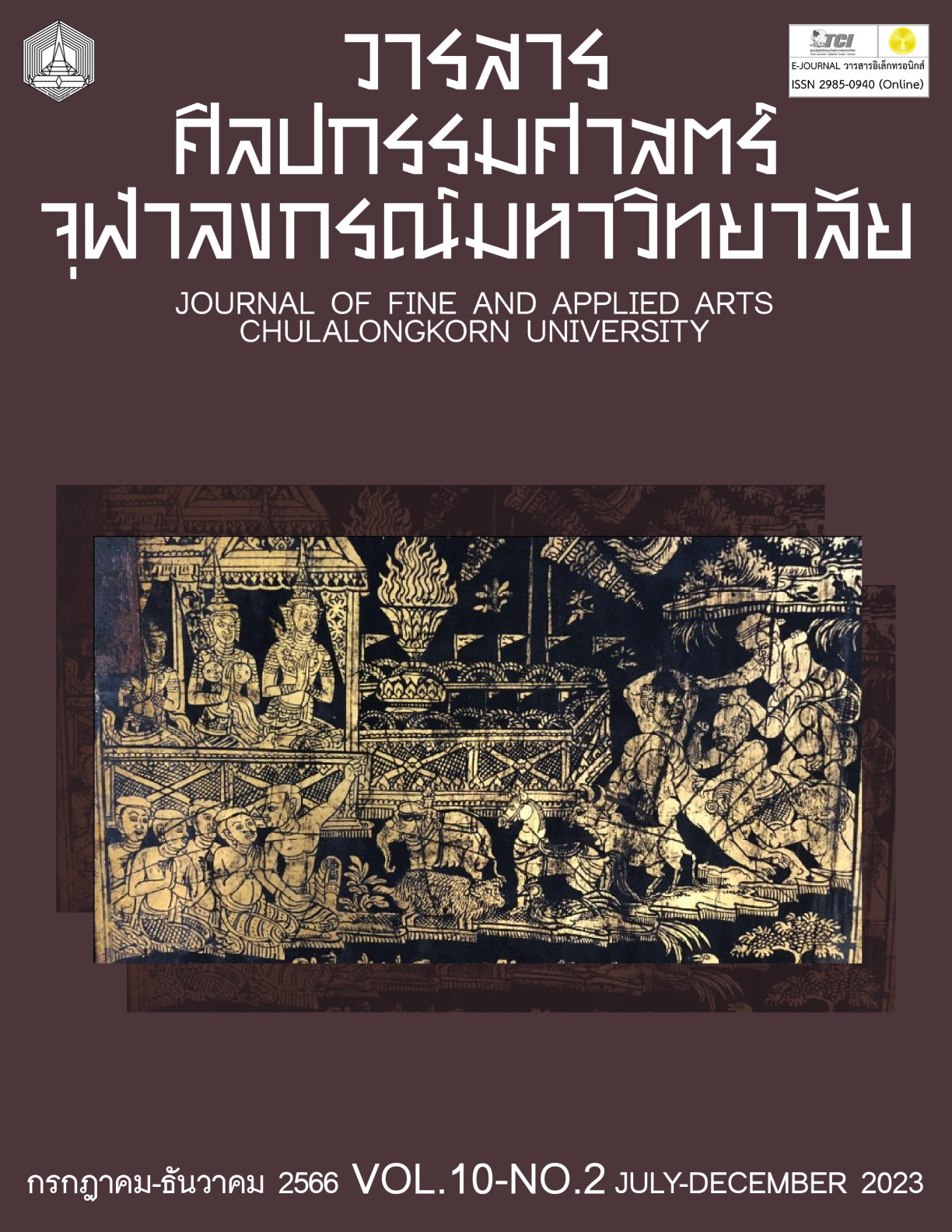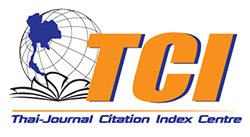GRAPHIC DESIGN ON PACKAGING GUIDELINES FOR AGRITOURISM BY USING WABI SABI CONCEPT
Keywords:
Graphic design, Packaging, Agritourism, Wabi SabiAbstract
The objectives of this research are to: 1. determine the principles of graphic design on packaging using the wabi sabi concept; 2. determine the principles of graphic design on packaging using the wabi sabi concept suitable for various types of agritourism. Literature collection was used by the researcher to find out what the main ideas were behind the graphic elements on packaging and the graphic forms of wabi sabi. The results of the data analysis revealed that wabi sabi were 1) imperfection 2) impermanence 3) incompleteness and 4) simplicity. Based on the concept of graphic design, wabi sabi can be divided into 2 aspects, namely: 1) material characteristics and 2) practice, and has a graphical style that corresponds to the following concepts: 1) naive style 2) crude style 3) intuitive style and 4) raw style. To discover a method of designing graphic art, the researcher conducted interviews with Japanese art experts. The results of the analysis revealed that using the following approach 1) space and time 2) blank space 3) flux 4) suggestion 5) ambiguous 6) simplicity could communicate the concept of Wabi Sabi. All research results answered the first objective. The researcher then used all the results to create a tool to ask graphic design experts to answer the second objective. The study used 7 different ways to classify agritourism: rice cultivation, cutting flowers, vegetables, orchard, herbs, animal farming, festivals.The graphic design on the packaging includes graphic styles, guidelines for graphic design, color schemes, and typography styles.
References
Dejkong, Baiplu. “Wabi Sabi: beauty from imperfection. Simplicity that lasts.” https://wonderfularch.com/wabi-sabi-design.
ใบพลู เดชคง. “วาบิ ซาบิ (Wabi Sabi) ความงามจากความไม่สมบูรณ์ ความเรียบง่ายที่คงอยู่.” https://wonderfularch.com/wabi-sabi-design.
Itworaphan, Chaiyot. Snow, Moon, Flowers: Japanese Garden. Bangkok: Photo Documentary, 2014.
ชัยยศ อิษฎ์วรพันธุ์. หิมะ พระจันทร์ ดอกไม้ : สวนญี่ปุ่น. กรุงเทพมหานคร : สารคดีภาพ, 2557.
Juniper, Andrew. Wabi sabi: the Japanese art of impermanence. Vermont: Tuttle Publishing, 2019.
Kempton, Beth. Wabi Sabi: Japanese wisdom for a perfectly imperfect life. Kentucky: Harper Design, 2019.
Khunphon, Wanassanan. “The Concept of Wabi-Sabi in Zen Philosophy.” Master thesis, Chiang Mai University, 2010.
วนัสนันท์ ขุนพล. “แนวคิดเรื่อง วะบิ-ซะบิ ในปรัชญาเชน.” วิทยานิพนธ์ระดับปริญญามหาบัณฑิต, มหาวิทยาลัยเชียงใหม่, 2553.
Koren, Leonard. Wabi-Sabi for Artists, Designers, Poets, Philosophers. California: Imperfect Publishing, 2008.
Lin, Shijian. Remarkable graphic styles: rough. Guangzhou: SendPoints Publishing, 2018.
Office of the Promotion of Conventions and Exhibitions. “Agri-tourism, natural experiences for MICE travelers.” https://elibrary.tceb.or.th/th/Brochure/Trends/Infographic_trends/6051.
สำนักงานส่งเสริมการจัดประชุมและนิทรรศการ. “การท่องเที่ยวเชิงเกษตรประสบการณ์ธรรมชาติสำหรับนักเดินทางไมซ์.” https://elibrary.tceb.or.th/th/Brochure/Trends/Infographic_trends/6051.
Onaree, Nuttaphol. “The Merger of Cultural Assets in Packaging Design of Souvenirs from Japan.” Journal of Information 16, no. 2 (July-December 2017): 31-41.
ณัฐพล อ้นอารีย์. “การผสานทุนวัฒนธรรมผ่านงานออกแบบกราฟิกบนบรรจุภัณฑ์ของฝากประเทศญี่ปุ่น.” วารสารสารสนเทศ ปีที่ 16, ฉบับที่ 2 (กรกฎาคม-ธันวาคม 2560): 31-41.
Pongvarut, Jirayu. “Traditional Japanese Aesthetic in Modern and Contemporary Graphic Design of Poster.” Silpa Bhirasri (Journal of Fine Arts) 3, no. 1 (September-December 2020): 63-159.
จิรายุ พงส์วรุตม์. “ความงามแบบประเพณีญี่ปุ่นในงานออกแบบกราฟิกโปสเตอร์สมัยใหม่และร่วมสมัย.” วารสารศิลป์ พีระศรี คณะจิตรกรรม ประติมากรรมและภาพพิมพ์ มหาวิทยาลัยศิลปากร ปีที่ 3, ฉบับที่ 1 (กันยายน-ธันวาคม 2558): 63-159.
Suzuki, Daisetz T. Zen and Japanese culture. New Jersey: Princeton University Press, 2019.
Toomhirun, Chalermsak, Jinda Khlibtong, and Petch Taveewong. “Development of Communication Model for Sustainable Agro-Tourism Extension.” TLA Research Journal 11, no. 1 (January-June 2018): 48-62.
เฉลิมศักดิ์ ตุ้มหิรัญ, จินดา ขลิบทอง และ เพชร ทวีวงษ์. “การพัฒนารูปแบบการสื่อสารเพื่อส่งเสริมการท่องเที่ยวเชิงเกษตรอย่างยั่งยืน.” วารสารวิจัย สมาคมห้องสมุดแห่งประเทศไทย มหาวิทยาลัยสุโขทัยธรรมาธิราช ปีที่ 11, ฉบับที่ 1 (มกราคม-มิถุนายน 2561): 48-62.
True Plookpanya. “6 farm stays for agricultural tourism: simple lifestyles with complete satisfaction.” https://www.trueplookpanya.com/blog/content/71288.
ทรูปลูกปัญญา. “6 ฟาร์มสเตย์ท่องเที่ยวเชิงเกษตร เต็มอิ่มแบบวิถีชีวิตเรียบง่าย.” https://www.trueplookpanya.com/blog/content/71288.
Yoshida, Duangdao. “侘寂 Wabi-Sabi.” Journal of Humanities and Social Sciences, Rajapruk University 3, no. 2 (June-September 2017): 23-30.
ดวงดาว โยชิดะ. “วาบิ-ซาบิ กับการพัฒนาการท่องเที่ยวอย่างยั่งยืน.” วารสารมนุษย์ศาสตร์และสังคมศาสตร์ มหาวิทยาลัยราชพฤกษ์ ปีที่ 3, ฉบับที่ 2 (มิถุนายน-กันยายน 2560): 23-30.
Downloads
Published
Issue
Section
License
Copyright (c) 2023 JANENUTCH SODSAI, WILAI ASAWADECHSAKDI, PAWIN BUNNAG

This work is licensed under a Creative Commons Attribution-NonCommercial-NoDerivatives 4.0 International License.
ลิขสิทธิ์ของบทความเป็นของเจ้าของบทความ บทความที่ได้รับการตีพิมพ์ถือเป็นทัศนะของผู้เขียน
กองบรรณาธิการไม่จำเป็นต้องเห็นด้วยและไม่รับผิดชอบต่อบทความนั้น






